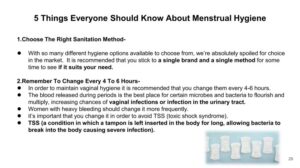
Recovery workouts play a pivotal role in any fitness journey, helping to rejuvenate both the body and mind after intense activities. By understanding the essence of these workouts, one can enhance their overall health and performance while preventing injuries. This overview dives into the various types of recovery workouts and explores their importance in establishing a balanced fitness regime.
From active movements to passive strategies, recovery workouts encompass a wide range of activities designed to promote healing and relaxation. Engaging in such practices not only aids physical recuperation but also supports mental clarity, creating a holistic approach to fitness that thrives on well-being.
Recovery Workouts Overview

Recovery workouts are essential components of any fitness regime, designed to help the body heal and rejuvenate after intense physical activity. They play a pivotal role in enhancing performance, preventing injuries, and ensuring long-term progress. By integrating recovery workouts into a fitness routine, individuals can achieve a balance between exertion and rest, which is crucial for sustainable fitness success.There are two primary types of recovery workouts: active recovery and passive recovery.
Active recovery involves low-intensity exercises that promote blood flow and help to reduce muscle soreness without straining the body. Examples include light jogging, cycling, or yoga. On the other hand, passive recovery refers to complete rest or engaging in activities that do not involve physical exertion, such as lounging or napping. Both types of recovery are vital in allowing the body to repair itself, replenish energy stores, and prepare for upcoming training sessions.
Benefits of Recovery Workouts
Incorporating recovery workouts into a fitness program yields numerous physical and mental benefits. These benefits not only aid in the body’s physical recovery but also contribute to overall well-being.
- Improved Muscle Recovery: Recovery workouts facilitate the removal of metabolic waste products like lactic acid, which can accumulate during intense exercise. This process helps to alleviate soreness and stiffness.
- Enhanced Flexibility: Engaging in gentle movements and stretches during recovery can improve flexibility and range of motion, making subsequent workouts more effective.
- Mental Well-Being: Recovery sessions often include mindfulness practices such as yoga or meditation, which can reduce stress and enhance mental clarity.
- Injury Prevention: By allowing the body to recover properly, the risk of overuse injuries decreases, leading to a more consistent and injury-free workout schedule.
- Increased Performance: Incorporating recovery workouts can lead to improved performance levels during high-intensity workouts, as the body is better equipped to handle physical demands.
“Recovery is not a luxury; it’s a necessity for optimal performance.”
By understanding and implementing effective recovery workouts, individuals can create a balanced fitness experience that promotes both immediate gains and long-term health benefits.
Recovery Workouts in Relation to Health and Fitness

Recovery workouts play a crucial role not only in physical health but also in mental well-being. By incorporating recovery sessions into a fitness regimen, individuals can enhance their overall sense of well-being and mitigate the stresses of daily life. This use of strategic rest is essential for both the body and mind, allowing for growth, repair, and a balanced emotional state.
Impact on Mental Health and Overall Well-Being
Recovery workouts significantly contribute to mental health by promoting relaxation, reducing anxiety, and improving mood. Engaging in light activity after intense workouts helps release endorphins, which are known as the body’s natural painkillers and mood elevators. These sessions can transform a stressful day into a more manageable experience. Moreover, the rhythmic nature of activities like yoga and stretching fosters mindfulness, helping individuals stay grounded.
“Recovery workouts offer not just physical benefits, but essential mental healing and clarity.”
Exercises that Promote Recovery
Certain exercises are particularly effective in managing stress and anxiety. These activities focus on gentle movements and stretching, which can help lower heart rates and reduce tension. Engaging in these practices allows the body to enter a state of calm. The following exercises are noteworthy:
- Yoga: This ancient practice blends physical postures with breath control, promoting relaxation and enhancing mental clarity.
- Walking: A simple yet effective way to clear the mind, walking boosts circulation while providing an opportunity to connect with nature.
- Foam Rolling: This self-myofascial release technique can alleviate muscle tightness and improve blood flow, which in turn helps reduce anxiety levels.
- Gentle Stretching: Incorporating gentle stretches helps release physical tension and promotes a sense of serenity throughout the body.
These activities not only support physical recovery but also nurture mental resilience, making them powerful tools in stress management.
Role of Nutrition in Enhancing Recovery Workouts
Nutrition plays an integral role in optimizing the benefits of recovery workouts. Consuming the right nutrients before and after these sessions can significantly enhance performance and recovery. Proper nutrition aids in muscle repair, replenishes energy stores, and supports overall health. Key nutritional strategies include:
- Hydration: Staying well-hydrated is essential for optimal recovery. Water aids in digestion and helps transport nutrients throughout the body.
- Protein Intake: Consuming protein post-workout supports muscle repair and growth. Options include lean meats, dairy, and plant-based proteins like beans and lentils.
- Whole Foods: Incorporating a variety of fruits, vegetables, and whole grains provides essential vitamins and minerals that bolster recovery and overall health.
- Healthy Fats: Omega-3 fatty acids found in fish and nuts can reduce inflammation and promote joint health, enhancing recovery processes.
By combining effective recovery workouts with proper nutrition, individuals can create an environment that fosters both physical and mental healing, ultimately leading to improved health and fitness outcomes.
Integrating Recovery Workouts into Daily Routines
Incorporating recovery workouts into daily routines is essential for maintaining overall health and enhancing fitness progress. These workouts play a crucial role in reducing muscle soreness, improving flexibility, and preventing injuries. By strategically planning recovery days within a weekly exercise schedule, individuals can optimize their performance while ensuring their bodies have the necessary time to heal and rejuvenate.
Weekly Workout Plan
Designing a balanced weekly workout plan that integrates recovery days can help manage fatigue and enhance performance. Below is an example of a weekly schedule that includes various workout types alongside dedicated recovery sessions.
| Day | Workout Type | Details |
|---|---|---|
| Monday | Strength Training | Focus on upper body, 45-60 minutes |
| Tuesday | Recovery Workout | Light yoga or stretching, 30-45 minutes |
| Wednesday | Cardio | Moderate-intensity running or cycling, 30-45 minutes |
| Thursday | Recovery Workout | Gentle walking or swimming, 30-40 minutes |
| Friday | Strength Training | Focus on lower body, 45-60 minutes |
| Saturday | Active Recovery | Light activity, such as hiking, 60 minutes |
| Sunday | Rest Day | No structured workouts |
This plan illustrates how recovery workouts fit seamlessly into a balanced regimen, ensuring adequate rest while maintaining an active lifestyle.
Complementary Treatments
Recovery workouts can be further enhanced through alternative treatments that promote relaxation and mental well-being. Here are two effective practices that complement recovery workouts:
- Yoga: Incorporating yoga sessions helps improve flexibility, balance, and mindfulness. Specific poses like Child’s Pose or Downward Dog can alleviate tension and promote relaxation, making it an excellent addition to recovery days.
- Meditation: Practicing meditation, even for short durations, helps in reducing stress and improving mental clarity. Techniques such as guided imagery or focused breathing can provide a mental reset, which is beneficial post-workout.
These activities not only aid physical recovery but also foster a holistic approach to health and fitness.
Modifications for Various Needs
Recovery workouts should be adaptable to accommodate different age groups and health conditions. Here are some modifications suitable for children and individuals with specific health considerations:
- For Children: Focus on playful stretching and fun activities like dancing or nature walks. Keeping the sessions engaging enhances adherence and enjoyment.
- For Seniors: Incorporate gentle movements with an emphasis on balance and stability, such as chair yoga, to reduce fall risk and improve mobility.
- For Individuals with Injuries: Modify movements to prevent strain; for example, use resistance bands for strength training instead of heavy weights, and include physical therapy exercises prescribed by healthcare professionals.
These modifications ensure that recovery workouts are accessible and effective for everyone, promoting health and fitness across all demographics.
Concluding Remarks
In conclusion, incorporating recovery workouts into your routine is essential for achieving optimal health and fitness. By understanding their benefits and integrating them effectively, one can enjoy improved performance, reduced stress, and a greater sense of overall balance. Remember, recovery is not just a pause in your fitness journey; it’s a vital component that fuels progress and enhances well-being.
Key Questions Answered
What are recovery workouts?
Recovery workouts are exercises designed to help the body recuperate after intense training, promoting healing and flexibility.
How often should I incorporate recovery workouts into my routine?
It’s recommended to include recovery workouts at least once or twice a week, depending on your fitness level and intensity of training.
Can recovery workouts improve mental health?
Yes, recovery workouts can reduce stress and anxiety, promoting relaxation and mental clarity.
What types of exercises are best for recovery workouts?
Gentle yoga, stretching, light walking, and swimming are excellent options for effective recovery workouts.
Is nutrition important for recovery workouts?
Absolutely! Proper nutrition supports muscle repair and overall recovery, enhancing the benefits of your workouts.





